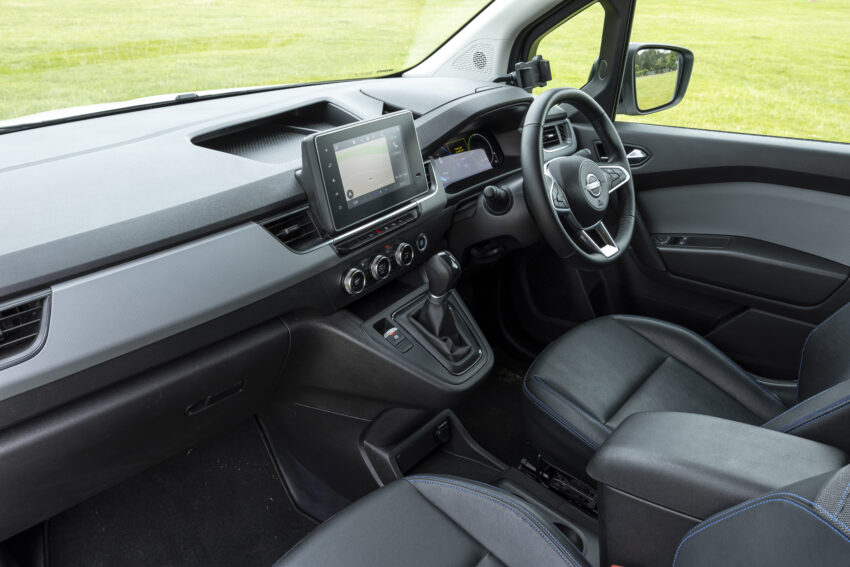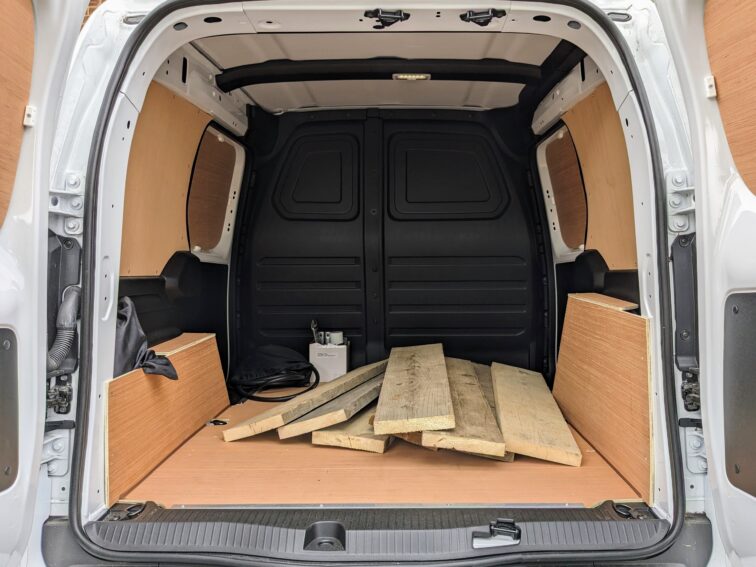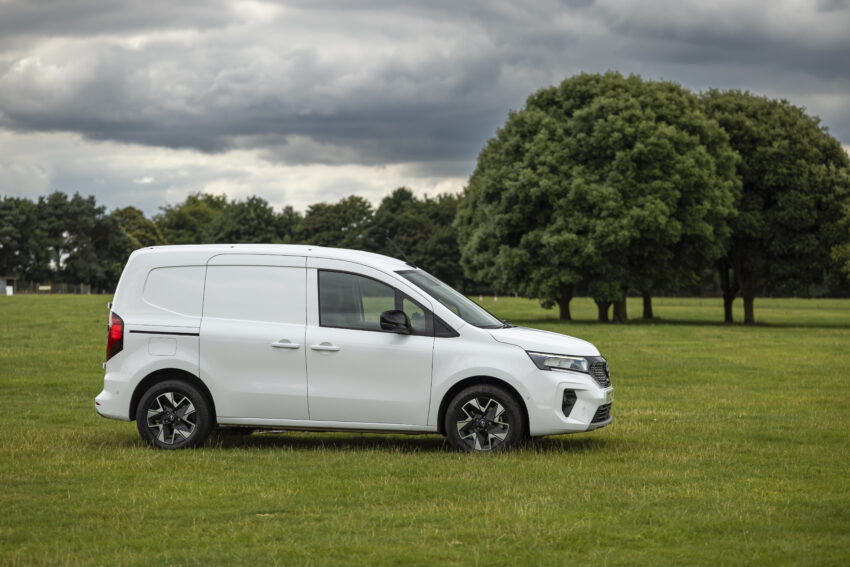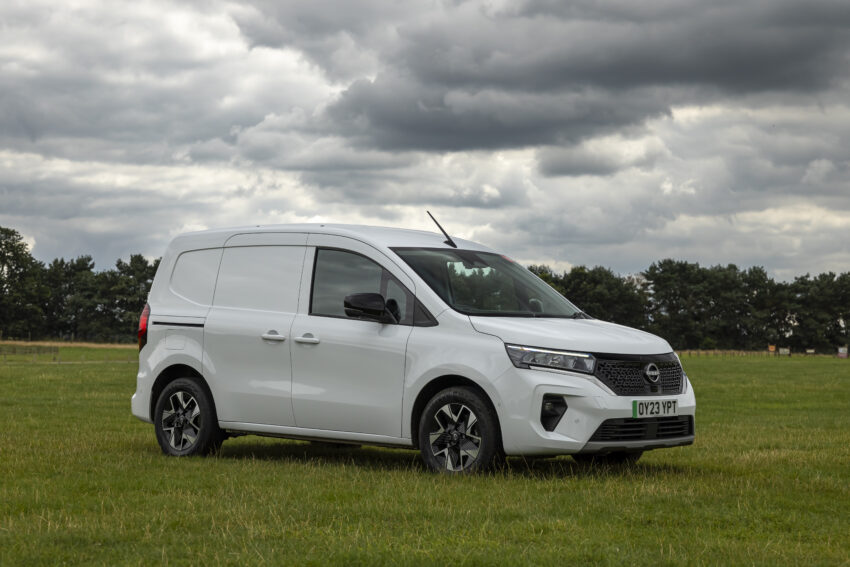Nissan Townstar EV review
Is the electric Nissan Townstar a worthy rival to the Ford Courier, Vauxhall Combo and Renault Kangoo in the small van segment?
Squint a bit, and you might think the Nissan Townstar EV looks like some other vans. Yes, most vans have a simple two-box design, so you could argue they all look similar, but there’s more than a passing resemblance between the Renault Kangoo and the Townstar.
There’s a good reason for that, as most of what you see is a Renault Kangoo, but it’s one that Nissan’s engineers have tweaked and adjusted.
Competition in the sector is fierce, with a long list of rivals fighting for the same limited number of customers. The Townstar will have to be good to stop buyers looking at the Citroen e-Berlingo, Fiat E-Doblo, Maxus eDeliver 5, Mercedes-Benz eCitan, Peugeot e-Partner, Toyota Proace City Electric, or Vauxhall Combo Electric, as well as its Renault Kangoo cousin. And then there’s the forthcoming Ford E-Transit Courier. That’s quite a list.
Design, interior and technology
Nissan has filled Townstar’s cab with light-coloured plastics, which makes the space feel bright and arguably more spacious than it is.
There are plenty of cubby holes for a driver’s detritus — a big glovebox, a dash-top tray, a driver’s dash-top lidded cubby, deep door pockets, a central storage bin, a pair of cupholders, and an overhead shelf ideal for hiding charging cables.
An eight-inch touchscreen dominates the centre of the dash, which looks smart until you use it. It’s a dated Renault system with low-resolution graphics and slow touch responses. Still, it’s got smartphone mirroring, so you can ignore it and rely on Android Auto or Apple CarPlay instead.

Our Tekna+ test model comes with a 10-inch digital instrument panel for the driver, which is clear and neat, although not exactly configurable. You have a few design styles to choose from, though, so you’ll have something stylish to stare at.
There’s also plenty of kit (which we’ll run through later), including some surprisingly high-tech options for a panel van.
Battery, motor and performance
According to Nissan’s figures, you’ll be able to cover 183 miles in the Townstar EV. That’s pretty good from a 45kWh lithium-ion battery pack and roughly matches the range available from Vauxhall, Peugeot and Citroen with their 50kWh battery.
With a light load in the back, we covered hundreds of miles and returned 3.6 miles per kWh, translating to a real-world range of 162 miles. Not great, not terrible.
Recharging can be done at rates of up to 80kW, where a 15-80% top-up will take 37 minutes. On an ordinary home charger unit, empty to full takes seven hours, so any top-up will be easily achieved while sleeping.
Performance is a little pedestrian, with Nissan claiming the Townstar EV will reach 62mph in 14 seconds. It certainly feels like it takes a long time, although the initial surge off the line makes urban driving a cinch. That pep fades away as speeds increase, though.
The ride is firmer than many of its competitors, but that pays dividends in the corners where it feels pleasingly solid, even if the steering is a little over-assisted.
Payload and practicality
Two body lengths give the Townstar some flexibility, with load volumes of 3.3m3 in the L1 van rising to 4.3m3 for the longer L2 model. There are no roof height options, so that’s your lot, but it’s about the same as you’ll get in the back of a Vauxhall Combo for the L1 model and is significantly more spacious than the L2 Combo.
Loads of up to 1,810mm can be slotted into the cargo area of the smaller model — that’s less than 10mm shorter than the Combo — but expands by 420mm on the L2 van, which extends the load length to a class-leading 2,230mm.

Whichever length you pick, as with its rivals, you can slide two Euro pallets in the back through rear swing doors that open to 180 degrees. On the longer L2 model, the side door is also wide enough to take a pallet, extending flexibility in tight locations.
What’s not so impressive are the payload limits. The entry-level L1 van can only take 478kg, including the driver and any passengers. If, like me, you’re not the most svelte of people, then your load limits will start dropping very quickly. It’s also a massive 303kg less than a Combo will take. The L2 is better, at 681kg, but still falls well short of its rivals.
This is definitely a van for businesses delivering polystyrene cups, rolls of bubble wrap, or candy floss.
Price and specification
Nissan makes the Townstar available in three grades, with the Acenta getting some impressive ticks on the equipment list; there are LED headlights, electric mirrors, an 8.0-inch infotainment screen with Android Auto and Apple CarPlay, climate control, cruise control, and LED lights in the load area. Tekna adds body-coloured bumpers, built-in navigation, parking sensors, a rear camera and keyless entry and start, while the top-spec Tekna+ includes alloy wheels, a heated leather steering wheel, and a suite of extra safety technology.
It’s a great combination, but it doesn’t come cheap. The range starts at £33,995 before VAT, charges and any government grants or incentives, rising to £38,545 for a top-of-the-range model. The Renault Kangoo that the Townstar is based on is a cheaper option, and the range-topping Vauxhall Combo, the Pro L2, comes in at £32,850, undercutting even the entry-level Townstar.
Verdict
The Nissan Townstar EV is a lovely compact van that would be well-liked by many urban businesses. Its 183-mile range is broadly similar to its rivals, and it’s a nicer environment than Vauxhall’s finest to spend the day in. It’s loaded with tech, too.
Its load area is also larger than its rivals, although payload limits are woefully low in some cases, which will suit many but exclude some.
But it’s all undone by the list price. It’s thousands more than similar rivals, and with a recently updated Vauxhall Combo Electric van on the market and the new Ford E-Transit Courier on its way, it’s not special enough to compete.

Nissan Townstar EV Tekna+ L1
- Price: £37,345 plus VAT and OTR
- Powertrain: front-motor, front-wheel-drive
- Battery: 45kWh
- Power: 121bhp
- Torque: 181lb ft
- Top speed: 840mph
- 0-62mph: 14 secs
- Range: 183 miles
- Consumption: 4m/kWh
- Charging: up to 80kW






